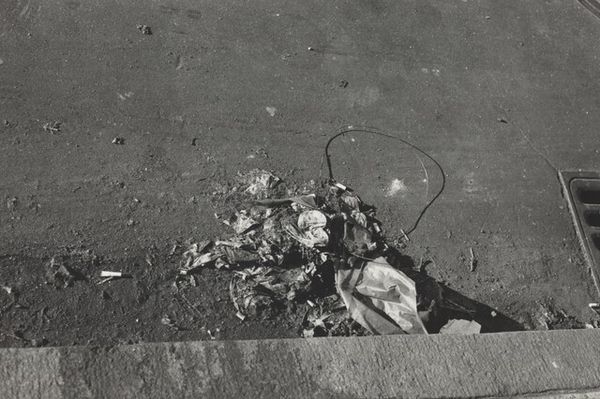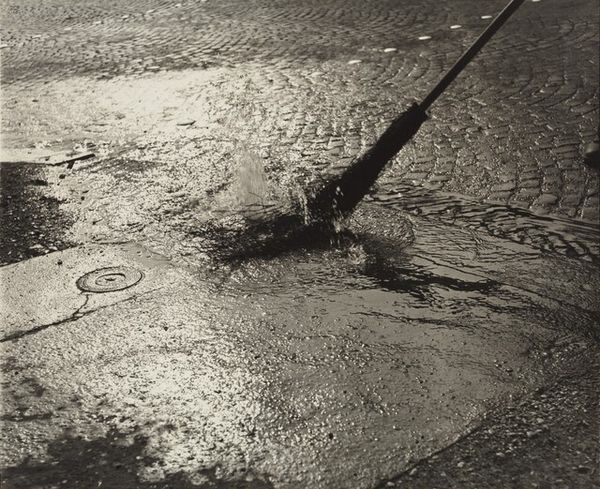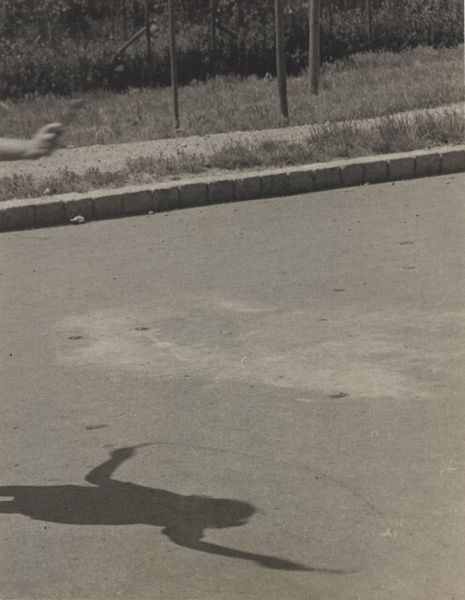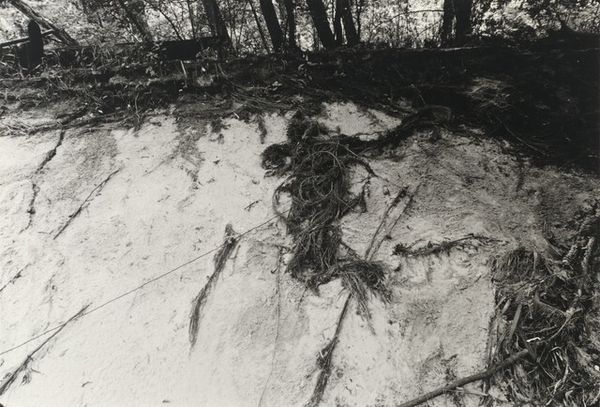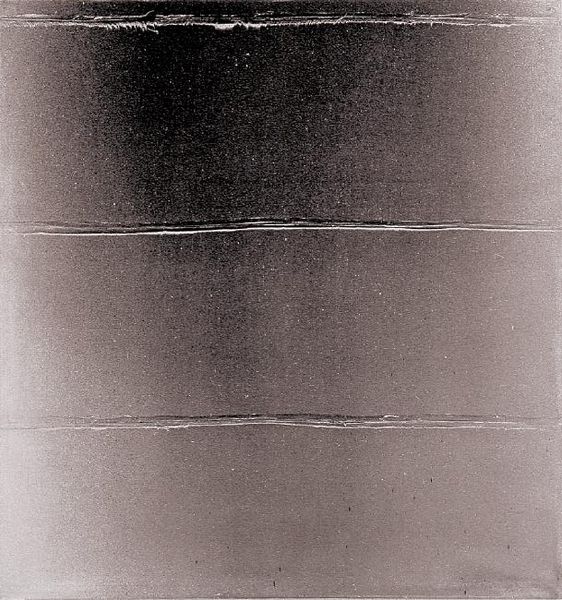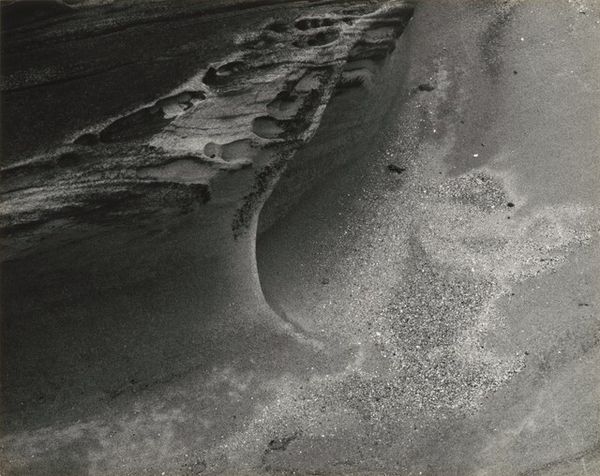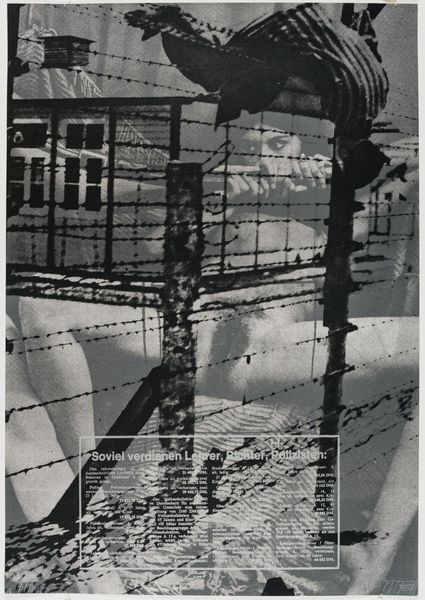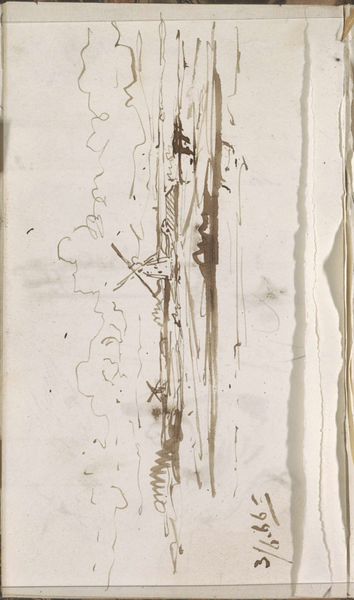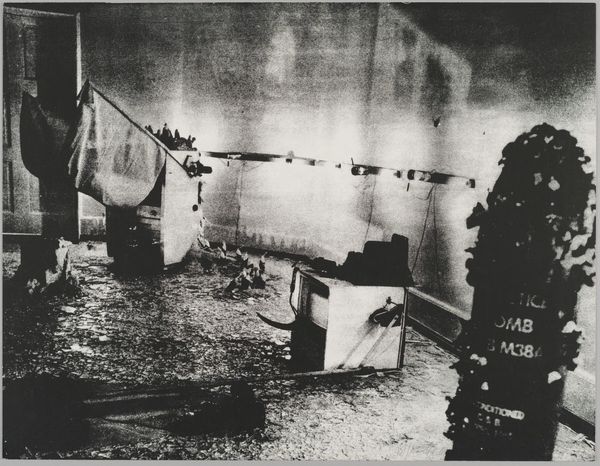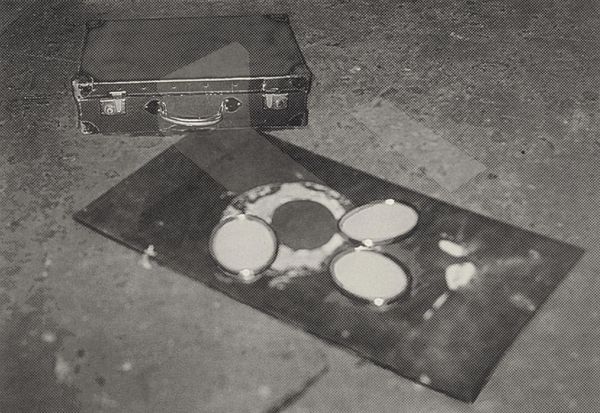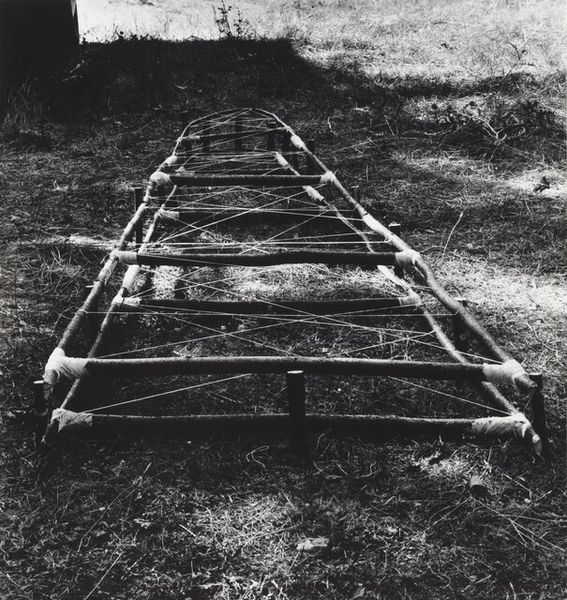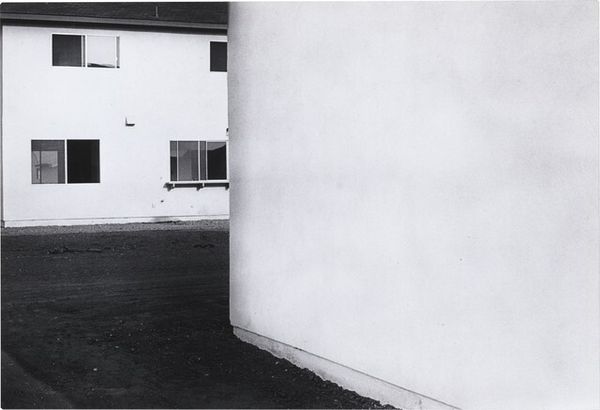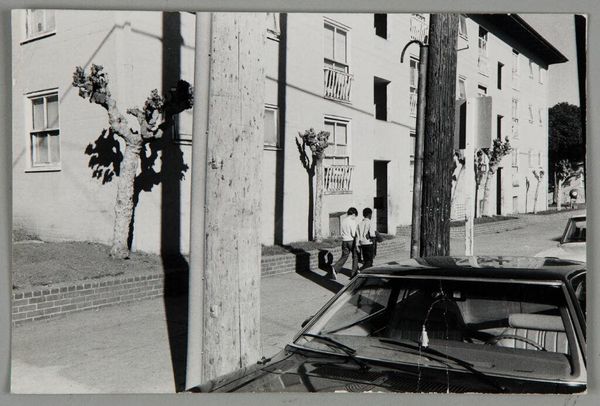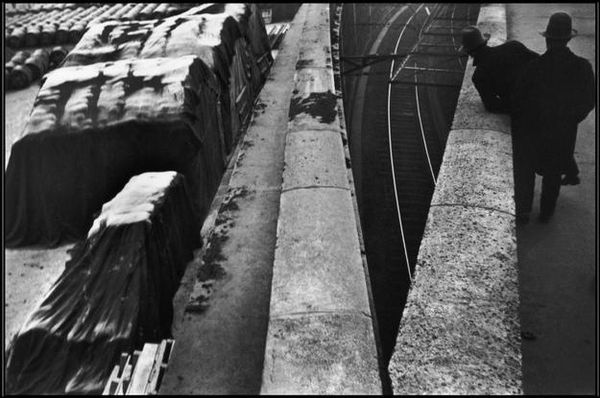
ephemeral-art, sculpture, site-specific, installation-art
#
abstract-expressionism
#
conceptual-art
#
sculpture
#
textured
#
ephemeral-art
#
environmental-art
#
sculpture
#
site-specific
#
installation-art
Dimensions: image: 17.78 × 24.13 cm (7 × 9 1/2 in.) sheet: 20.32 × 25.4 cm (8 × 10 in.)
Copyright: National Gallery of Art: CC0 1.0
Editor: This is Hans Haacke's "Tokyo Trickle," created in 1970. It appears to be an ephemeral, site-specific installation, potentially using water or some other liquid on pavement, bisected by a taut string. There's a tension between the planned linearity of the string and the organic spreading of the liquid. What’s your read on this work? Curator: This piece, like much of Haacke's work, exists at the intersection of art and socio-political commentary. How does the impermanence of the 'trickle' challenge traditional notions of art as a lasting monument, particularly in the context of rapidly changing urban landscapes and consumerism of 1970s Tokyo? Editor: I see the ephemerality as a form of protest, or at least questioning. It feels like a deliberate choice to create something temporary in a city defined by constant construction and demolition. Curator: Precisely. Consider the social climate of the time. Artists were increasingly critical of institutions, including art itself, and the way art could be complicit with power structures. Where do you see that critique embedded within this seemingly simple gesture? Editor: Maybe the trickle mocks the grand, permanent statements of traditional art. The fact that it disappears forces the viewer to consider the transient nature of everything, even, or especially, art itself. Curator: Yes, and it invites questions about the artist's role. Haacke isn't necessarily providing answers but prompting critical engagement with our environment, both physical and ideological. The string too plays a part, imposing an artificial order upon something naturally chaotic. What kind of statement does the imposition of order make? Editor: I didn't think about the string as part of a wider commentary but in conjunction with the "trickle" it looks to be suggesting art’s role is to observe these natural phenomenon rather than impose a meaning or outcome onto it? Curator: A wonderful insight. By using ephemeral materials and intervening subtly in public space, Haacke pushes us to question the systems that shape our perceptions and experiences. Editor: That gives me a new appreciation for Haacke’s practice and intentions, reframing my understanding of "Tokyo Trickle". Thanks!
Comments
No comments
Be the first to comment and join the conversation on the ultimate creative platform.
